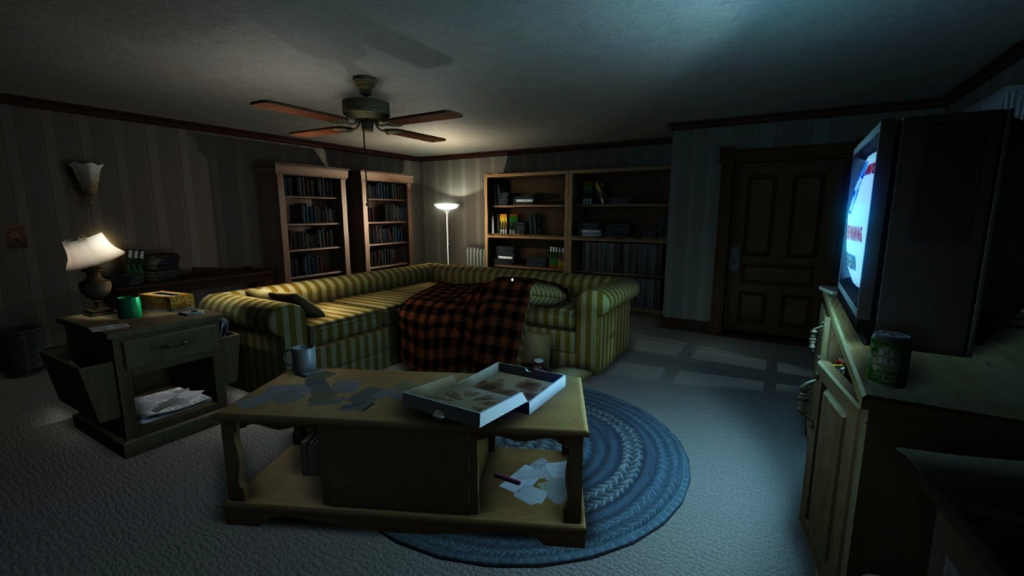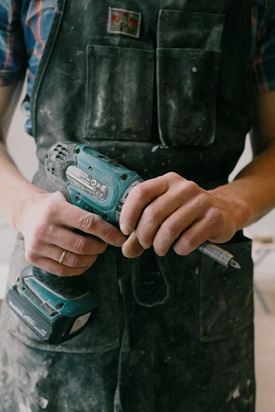
Some interesting findings came out this year:
- Most baby boomer homeowners live in homes built more than 30 years ago.
- Many of these older homes still have their original appliances, along with original heating and cooling systems.
- A lot of these owners will sell these homes as they are, without upgrading them first.
Leaf Home, a company focused on accessibility and upgrades, together with market researchers at Morning Consult, warn of a looming burden for younger generations. Our aging U.S. housing stock will depend on buyers to carry out repairs.
The silver lining for these put-upon home buyers? At least fixer-upper homes create low-cost entry points for hopeful buyers.
Fixer-Uppers for Sale? Expect More Than a Market Trend.

More than two-thirds of boomers have kept their same homes for 30+ years, according to the survey. Imagine clicking on a real estate tour video and finding yourself back in the 1990s. You get the picture. Home warranties just won’t cut the mustard for these serious repair needs.
So here we are. At the brink of a generational housing shift, as younger buyers and heirs alike receive deeds to old homes that they’ll need to fix up.
And younger buyers are losing time. Boomers should downsize and free up housing for new households, the 2024 Generational Divide in Homeownership Report suggests.
Meanwhile, upkeep would be nice, so younger generations aren’t stuck in a mire of repairs.
“The U.S. housing market is caught in a generational tug-of-war,” says Leaf Home, “with baby boomers opting to age in place and passing on outdated, under-maintained properties to millennials.”
Long-time homeowners might argue that they’d be silly to sell before they have to — especially if they’d need to buy another home in this pricey market.
Most current homeowners have mortgages with interest rates under 4%. Financially, many homeowners are just too comfortable to move.
In any case, even seniors’ best plans to age in place ultimately give way to the pursuit of social and physical support. Sooner or later, the younger generations will face a tidal wave of refurbishing needs.
Word to the Wise Renovator: Deeds, Searches, and Surveys Could Rule Out Certain Upgrades.
A deed, by laying out a property’s restrictions and easements, could limit the upgrades that an owner may make.
Consider the typical easement. It gives someone else access to a part of an owner’s property. This could limit a buyer’s prerogative to make improvements where the easement is.
Locations of easements typically appear on property deeds. But not always.
And a claim might not be obvious just by looking at the property. For example, an easement could permit others to enter at certain times or for certain needs or events.
Even a title search could miss some claims if they’re not recorded. That makes property surveys critical for fixer-upper buyers. A survey could expose easements, longstanding use, adverse possession, or boundary line misunderstandings.
Reminder: Seek Applicable Permits for Renovations!
Repairs or small additions don’t require permits. But your seller’ disclosure could point out needs for more extensive work. The contractors must adhere to the rules and standards issued by your local building authority.
Keep in mind the way home improvements connect with the home’s title. For example, if a contractor believes you owe money for the work or materials, that business could file a lien against the title. Also, construction permits, including any open permits, are searchable by a title insurance company. So, do get the necessary permits and follow up to resolve any bills and/or construction liens.
Finally, renovations can raise the value of the home you’ve purchased. The local tax assessor re-evaluates revamped homes. Property taxes and transfer taxes rises may follow. In Pennsylvania, for example, there’s a 1% realty transfer tax on the value of real estate when the deed changes hands.
All of that said, this article can only highlight general issues that might affect your planning. It is not legal advice. For situation-specific guidance with permitting, state laws, and tax responsibilities, speak with your legal and financial professionals.
Where Are the Fixer-Uppers? Realtor.com® Keeps Track.

Realtor.com keeps track of areas with the most fixer-uppers. It scours online listings for euphemistic phrases that flag older homes. You know: vintage, old-world, diamond in the rough, fixer-upper’s delight…
The company then creates a list. One city per state with at least 40,000 residents, good job prospects, and exceptionally large numbers of fixer-upper homes. In some of these cities, nothing’s cheap. Take Newark, New Jersey, where a small, older home runs $300K+. Then there’s Aurora, Colorado, near Denver and the Rocky Mountains. Its typical fixer-upper costs $500K+.
What’s more realistic, for most younger buyers? Here are a few of the cities Realtor.com points out:
- Syracuse, New York. Who knew? Upstate New York is filled with traditional homes, and the median fixer-upper is listed for $60K. Homes that need work, says Realtor.com, are just half the price of their updated counterparts.
- Macon, Georgia. A home perfectly ripened for renovations can be found for $65K in Macon. It’s considered an up-and-coming market, especially in neighborhoods like Beall’s Hill, Ingleside, Vineville, Shirley Hill, and Cherokee Heights.
- Pine Bluff, Arkansas. A fixer-upper can be had for $45,000 in Pine Bluff — a town that’s under an hour’s drive from Little Rock. Use caution, though. The FBI watches this area’s crime rate.
- Gary, Indiana. The median home sale price for all Gary, IN homes is just $75K as of early 2024. And $60,000 is enough to get started with a home in need of repair. More than one in five listings in Gary refers to needed repairs.
- St Louis, Missouri. It’s actually easy to find homes listed for sale for under $200K here. As for the homes in need of repair, they go for about half the price of the spruced-up properties.
- Philadelphia, Pennsylvania. The median Philly home, according to listing sites, is $250K or a little higher as of early 2024. But a fixer-upper can be had for just $160K.
New Haven, Connecticut costs somewhat more. The median is $262,500 for a home needing some special care. And nearly a third of the listings do.
For buyers who make major renovations, loan types matter. Read about them here: Buying a Fixer-Upper – What Are the Best Financing Options?
Upgrades and Repairs Will Be, for Younger Generations, Yet Another Cost of Buying.
Are upcoming generations ready, willing, and able to commit their resources to this? The Leaf Home and Morning Consult survey found many respondents who strongly believe wages aren’t keeping up with the costs of buying and maintaining homes. Their concerns point to trouble down the road.
Maybe current homeowners can help. At least we can remind ourselves to keep the next generation in mind through the upkeep of our homes.
Supporting References
Leaf Home via LeafHome.com: 2024 Generational Divide in Homeownership Report – Impact of Boomers Aging in Place on Millennial Homeownership (Jan. 22, 2024).
Melissa Dittmann Tracey for the National Association of REALTORS® via REALTOR® Magazine: Younger Buyers Want Baby Boomers to Update Their Homes (Jan. 31, 2024; citing the 2024 Generational Divide in Homeownership Report from Leaf Home and Morning Consult).
Evan Wyloge for the National Association of REALTORS® via Realtor.com®: The 10 Cities With the Most Fixer-Uppers for Sale and How Much You’ll Pay (Jan. 29, 2024).
Pennsylvania Department of Revenue: Realty Transfer Tax (undated).
Rene Bermudez for LendingTree.com: Mortgage Interest Rates Forecast for 2024 – When Will Rates Go Down? (updated Feb. 6, 2024).
Deeds.com: Can Home Renovations Affect My Real Estate Title? (May 23, 2022).
And as linked.
More on topics: Renovations and permits, Renovations and mortgages
Photo credits: Banner file via Wikimedia Commons, originating from The Fullbright Company and licensed as CC-BY-SA 3.0 unported; also: La Miko and Ksenia Chernaya, via Pexels.
